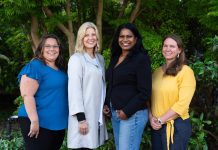Submitted by the Whatcom County Health Department
Responding to contagious disease is one of the most important functions of a public health system. How do health officials keep outbreaks from impacting the entire community?
Whatcom County is now in Phase 2 of Washington State’s Safe Start plan. Some restrictions have been relaxed, allowing stores and restaurants to reopen. While we are excited that these businesses will be reopening, as more people interact with each other, there will be more opportunities for outbreaks in our county.
What is an outbreak?
An outbreak is two or more cases of COVID-19 among individuals who were exposed to the virus from the same source, such as at a workplace. Additionally, one confirmed case in a long term care facility (nursing home or assisted living facility) is considered a COVID-19 outbreak.
Responding to disease outbreaks is a long-standing public health strategy to keep our community healthy and limit spread of disease. As your local health department, we’ve responded to many outbreaks caused by other diseases, like foodborne illnesses or influenza. We’re using what we know from our experience, plus what the latest science tells us about COVID-19, to be well prepared to manage new outbreaks in our community,
How is a COVID-19 outbreak managed?
When we learn of an outbreak, we work closely with facility operators and employees. We do a thorough assessment of the outbreak location. We talk to the employer, review site plans and workflows, and may do a virtual or in-person site visit to see if protective measures based on guidance from the CDC and Washington State Department of Health are in place. We then work with the employer to recommend any additional steps they should take to improve safety.
Employers should have a COVID-19 safety plan, and facilities with outbreaks work closely with public health to implement preventative and corrective measures. This includes putting environmental control measures into place, such as increasing cleaning, relocating workspaces to keep six feet apart, or installing shields.
We also do case investigations and contact tracing so that we can find out how many people may be sick or exposed. Depending on what we learn in our disease investigation, we take some or all of the following actions:
- Work with the workplace for a voluntary closure – if needed – while site assessment and case investigations are completed.
- Ensure that all people who may have been exposed to a person while they were contagious are quarantined and tested. This includes fellow employees or customers who are identified as close contacts, and other close contacts like family members or roommates.
- Identify and call close contacts of confirmed cases and ensure these individuals are also tested.
- Retest anyone who initially tested negative and later develops symptoms.
- Help anyone who cannot isolate or quarantine at home to find a safe space to do so.
- Provide education to workers about workplace and at-home practices to prevent infection. Sometimes this includes a site visit for safely-distanced, in-person education.
Long Term Care Facilities
We’ve taken added steps to support long term care facilities who have experienced outbreaks. We’ve done this because people over 65 are more likely to get very sick from COVID-19 and because there is a greater chance for the disease to spread in a population of people all living in close quarters with one another.
When a facility outbreak is identified, we work closely with the facility to implement a rapid response to contain the spread. This includes providing support to perform testing of all facility residents and staff, with their consent. We’ve also worked with facilities to make sure that they have enough PPE and staffing resources, and we’ve helped make sure they can follow the latest regulations issued by state and federal public health officials.
As part of Washington’s Safe Start plan, Washington State has directed skilled nursing facilities and assisted living facilities with memory care units to test all residents and staff. This testing, along with other infection prevention measures, is a critical tool to identify cases and quickly stop transmission in congregate living facilities.
While our goal is to have zero COVID-19 outbreaks in our county, the reality is that there will be more in the future. As we all begin to interact more, there is more risk for COVID-19 to spread. Outbreak management is a huge part of what public health does, and we are well prepared and equipped to handle these challenges. Please do your part by following Phase 2 guidance. Keep gatherings small and maintain physical distance during your social and workplace interactions.






































